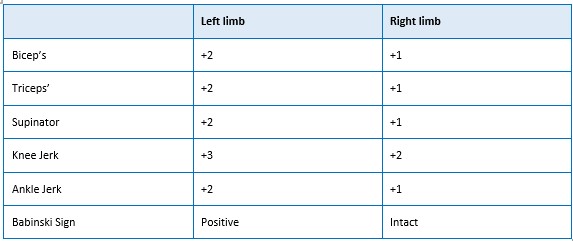Ayurvedic management of Hemorrhagic Stroke : A Case Report
DOI:
https://doi.org/10.21760/jaims.9.1.49Keywords:
Stroke, Aneurysm, Hemorrhagic, Pakshaghata, Panchakarma, AyurvedaAbstract
WHO defines stroke as a "neurological deficit of cerebrovascular cause that persists beyond 24 hours or is interrupted by death within 24 hours". There are two main types of stroke: ischemic, due to lack of blood flow, and hemorrhagic, due to bleeding. Both cause parts of the brain to stop functioning properly. Stroke is a major global public health problem. According to the Global Burden of Diseases (GBD) study in 1990, stroke was the second leading cause of death worldwide. Subsequent efforts to update the GBD study reported nearly 5.87 million stroke deaths globally in 2010.With the rising proportion of mortality, stroke still remains the second leading cause of death worldwide. The present study is a diagnosed case of ruptured right DACA aneurysm and unruptured right MCA M1 segment aneurysm and ICD (International classification of diseases) classification as Subarchnoid hemorrhage from middle cerebral artery. The patient presented with symptoms of loss of strength and weakness in left upper & lower extremity with stiffness. The Ayurvedic diagnosis of Vama Pakshaghata was done and managed with Dhanyamla Seka, Abhyanga, Shastika Shali Pinda Sweda, Dhara and Matrabasti. Two assessments were made before and after treatment using the National Institute of Health Stroke Scale (NIH-SS). The patient got significant improvement in the signs and symptoms and improvement in movements within 45 days. The results were remarkably encouraging.
Downloads
References
World Health Organisation (1978). Cerebrovascular Disorders (Offset Publications). Geneva: World Health Organization. ISBN 978-92-4-170043-6. OCLC 4757533
Strong K, Mathers C, Bonita R. Preventing stroke: Saving lives around the world. Lancet Neurol. 2007;6:182-7.
Strong K, Mathers C. The global burden of stroke. In: Mohr JP, Grotta JC, Wolf PA, Moskowitz MA, Mayberg MR, Von Kummer R, editors. Stroke: Pathophysiology, Diagnosis and Management. 5th ed. Philadelphia, PA: Elsevier; 2011. pp. 279–89.
Agnivesha, Charaka Samhitha, edited by Vaidya Yadavji Treikamji Acharya, Chaukambha Sanskrit Sansthan, 5th edition, 2001, sutrasthana, chapter 20, verse 11.
Dalhana, Sushrut Samhita, edited by Sharma PV, Chaukhambha sanskrit sansthan, edited 2010, Nidanasthana 1st chapter
Agnivesha, Charaka Samhitha, edited by Vaidya Yadavji Treikamji Acharya, Chaukambha Sanskrit Sansthan, 5th edition, 2001, chikitsasthana, chapter 28, verse 100.
Dalhana, Sushrut Samhita, edited by Sharma PV, Chaukhambha sanskrit sansthan, edited 2010, chikitsasthana 4th chapter.















